Plant growth promotion by bacterial volatiles (Invited Review)
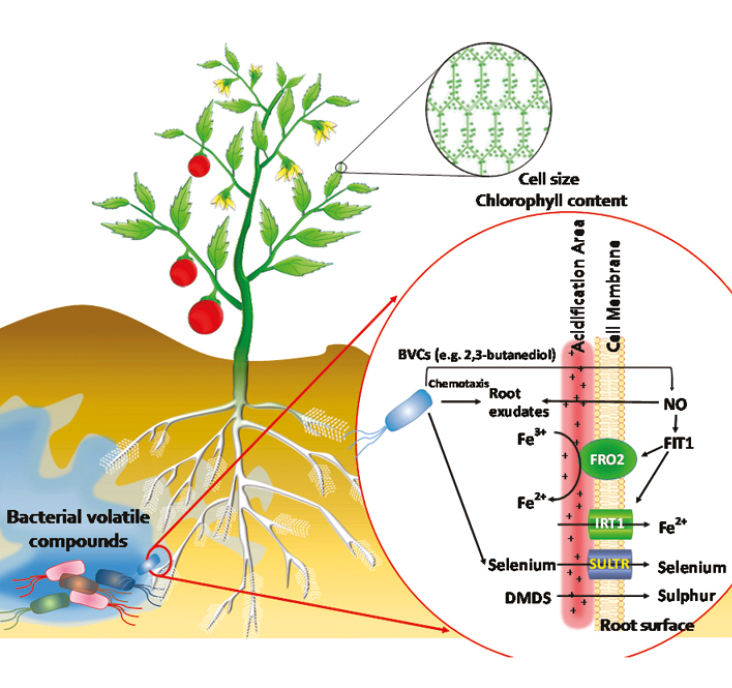
Annals of Botany 122: 349–358, 2018
doi: 10.1093/aob/mcy108
Bacterial volatile compounds (BVCs) increase photosynthesis efficiency, sugar accumulation and mineral uptake, alleviate biotic and abiotic stress, and modulate hormones signalling. Sharifi and Ryu review advances in our understanding of the mode of action. They discuss unanswered questions about the identity of plant receptors, practical applications including the effectiveness of combination of two or more BVCs on plant growth, and the potential side effects of these compounds for human and animal health. They propose that BVCs have great potential to be exploited as new category of fertilizer, calling them “gaseous fertilizers”. Further advances in the development of suitable technology and preparing standards will help apply the utility of BVCs in the crop field.
Authors: Rouhallah Sharifi and Choong-Min Ryu
Pelota genes regulate root development and defense responses in rice
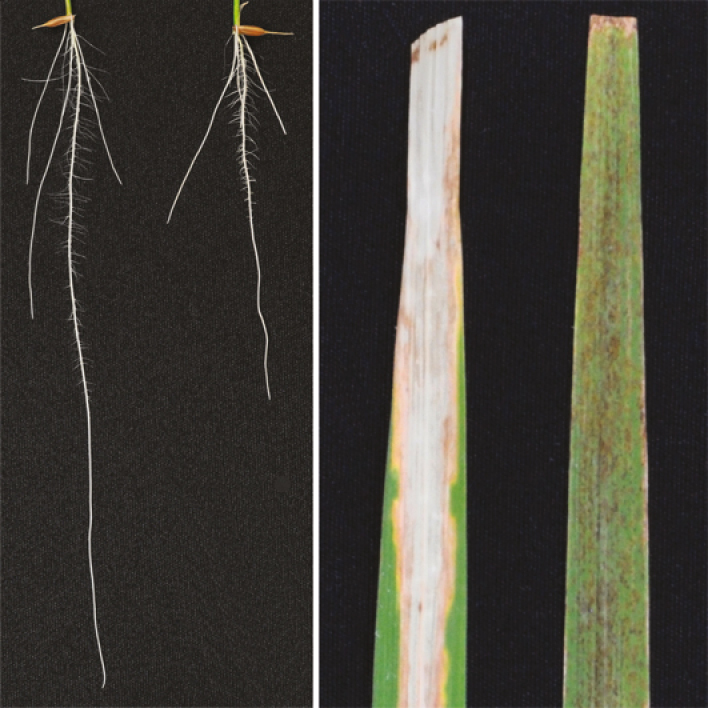
Annals of Botany 122: 359–371, 2018
doi: 10.1093/aob/mcy075
Seeds of the grass species rice (Oryza sativa) serve as the most widely consumed staple food especially in Asia. One of its major threats is Xanthomonas oryzae pv. oryzae (Xoo), the causal agent of rice bacterial blight, which could severely reduce the production. Ding et al. identify a rice mutant of OsPELO, whose counterparts in animals are involved in ribosome rescue and meiotic cell division. The mutant shows impaired root development and spotted-leaf phenotype. Surprisingly, the mutant is highly resistant to several Xoo strains. Further transcriptome analysis attributes the enhanced resistance to the systemic pre-activation of defence response.
Authors: Wong Ding, Jing Wu, Jin Ye, Wenjuan Zheng, Shanshan Wang, Xinni Zhu, Jiaqin Zhou, Zhichong Pan, Botao Zhang, and Shihua Zhu
Sodium chloride alters cadmium accumulation and metabolites in halophyte Carpobrotus rossii
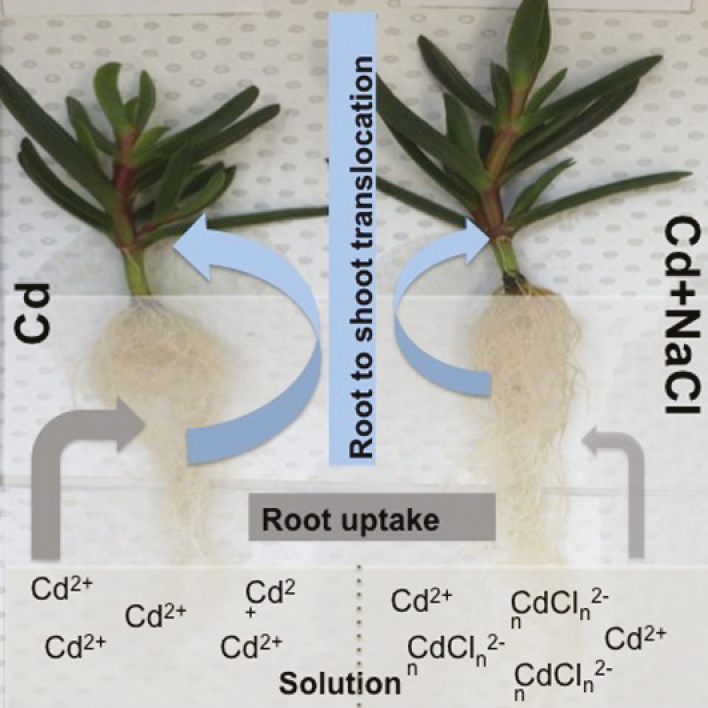
Annals of Botany 122: 373–385, 2018
doi: 10.1093/aob/mcy077
Salinity affects plant growth and metabolites in plants, which in turn affect Cd accumulation. Cheng et al. ran a hydroponic experiment to assess the effect of NaCl on the metabolic response to Cd and Cd accumulation in the halophytic Cd-accumulator Carpobrotus rossii (Aizoaceae). They find NaCl decreased Cd accumulation in the shoot by decreasing Cd root uptake and root-to-shoot translocation even under constant Cd2+ activity. Peptides and organic acids, particularly phytochelatins, play an important role in Cd tolerance and accumulation, but the change of those metabolites is not the reason for the decreased Cd accumulation.
Authors: Miaomiao Cheng, Anan Wang, Zhiqian Liu, Anthony R. Gendall, Simone Rochfort, and Caixian Tang
Variability of interstitial telomeric-like repeats in Mediterranean weedy species
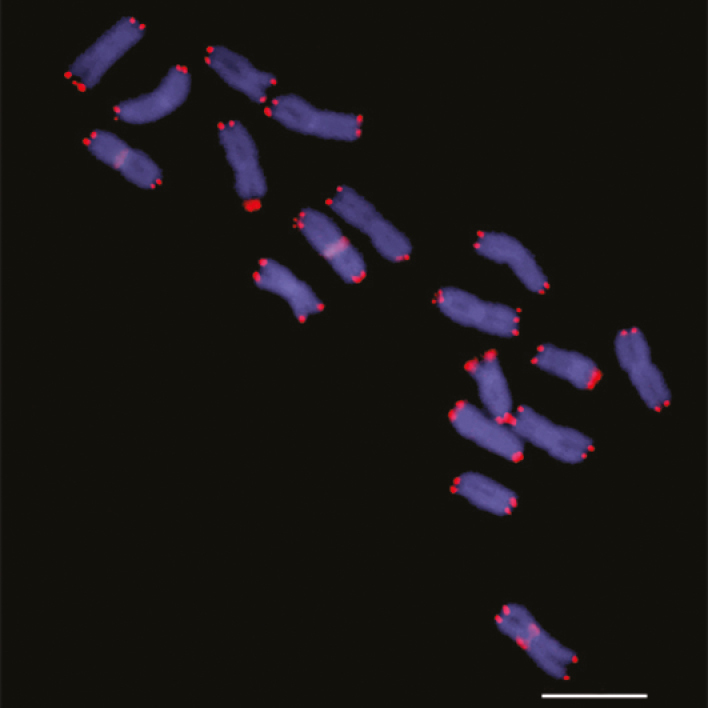
Annals of Botany 122: 387–395, 2018
doi: 10.1093/aob/mcy079
Although interstitial occurrence of telomeric repeat motifs (ITR) has been reported in the genome of a few organisms, the striking level of polymorphism found by Rosata et al. within a single species has not been described before. Rosata et al. investigate whether a comparable pattern of dynamism found for another repetitive element, interstitial 45S rDNA sites, in the genus Anacyclus (Asteracea), is linked to ICT and both have the same underlying causes. This study provides hints that ancient Robertsonian translocations or the amplification of terminal 45S rDNA sites can be involved in the patterns found for both repetitive families, although a wide survey across Asteraceae is needed for a conclusive answer.
Authors: Marcela Rosato, Inés Álvarez, Gonzalo Nieto Feliner, and Josep Rosselló
A new methodology to simplify the recalibration of FSP models
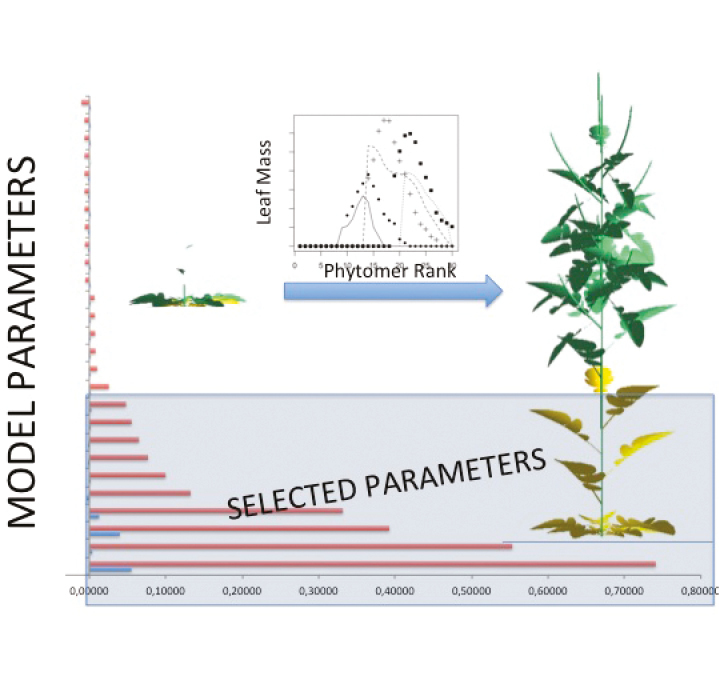
Annals of Botany 122: 397–408, 2018
doi: 10.1093/aob/mcy080
Functional–structural plant models (FSPM) define the interactions between the plants and their environment at organ to plant scale. However, the high level of description of the structure or model mechanisms makes this type of model very complex and hard to calibrate. Mathieu et al. propose a two-step method to facilitate the calibration process based on first a sensitivity analysis on the calibration criterion, and second the Akaike Information Criterion. In the case study of winter oilseed rape, they selected three parameters out of twenty-six. Fitting only a small number of parameters dramatically increases the efficiency in recalibration, increases the robustness of the model and helps identify the principal sources of variations in varying environmental conditions.
Authors: Amélie Mathieu, Tiphaine Vidal, Alexandra Jullien, QiongLi Wu, Camille Chambon, Benoit Bayol, and Paul-Henry Cournède
Limited seed and pollen gene dispersal in Taxus baccata
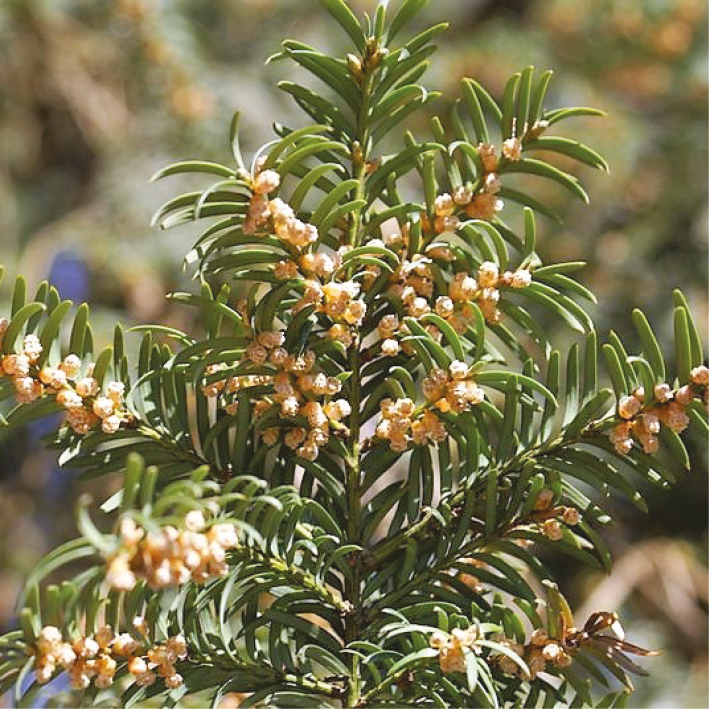
Annals of Botany 122: 409–421, 2018
doi: 10.1093/aob/mcy081
Knowledge about dispersal is required to assess the potential for colonizing new habitats, and connectivity of present and future plant populations. Using molecular data and the modelling approach, Chybicki and Oleksa estimate dispersal potential in Taxus baccata (Taxaceae), a dioecious tree with a highly fragmented distribution. They find that yew seeds travel shorter distances than pollen, facilitating a rapid development of a kinship structure within remnants. At the landscape level, however, genetic connectivity between different yew remnants is strongly limited. Taking into account population fragmentation, the study suggests that gene dispersal may constrain the adaptability of yew under climate change.
Authors: Igor J. Chybicki and Andrzej Oleksa
Shoot-based model and laser scanner data to study crown development

Annals of Botany 122: 423–434, 2018
doi: 10.1093/aob/mcy082
The functional–structural plant models (FSPM) allow shoot level simulation of tree crown development. The actual process of space filling by the crowns can be studied. Sievänen et al. use terrestrial laser scanning measurements from four Scots pine trees to validate the FSPM predictions at comparable levels to their detail. They test different formulations of crown development. Shoot elongation was best controlled by a combination of local and branch level light availability and production of new buds by local density. Their method shows a great potential for further and more comprehensive studies of tree crown development by combining modelling and laser scanner data.
Authors: Risto Sievänen, Pasi Raumonen, Jari Perttunen, Eero Nikinmaa, and Pekka Kaitaniemi
Positive and negative interactions on a dioecious grass species performance

Annals of Botany 122: 435–443, 2018
doi: 10.1093/aob/mcy085
Population viability of dioecious plants in arid environments is of particular concern. Female plants are more vulnerable to water stress than males, promoting unbalanced sex ratio under unfavourable climate. Graff et al. find that facilitation, mediated by shrub canopies, help females of the native dioecious grass Poa ligulari (Poaceae) to grow and persist in an arid Patagonian steppe. However, water depletion by shallow-rooted shrubs prevents females from benefitting from favourable conditions aboveground. The importance of this facilitation/competition balance is reflected in female and male plants spatial distribution. Graff et al. argue that changes in benefactor species abundances could also impact in dioecious population viability.
Authors: Pamela Graff, Martin R. Aguiar, and Rocio J. Almeida
Karyotype structure and evolution in Brachypodium annuals
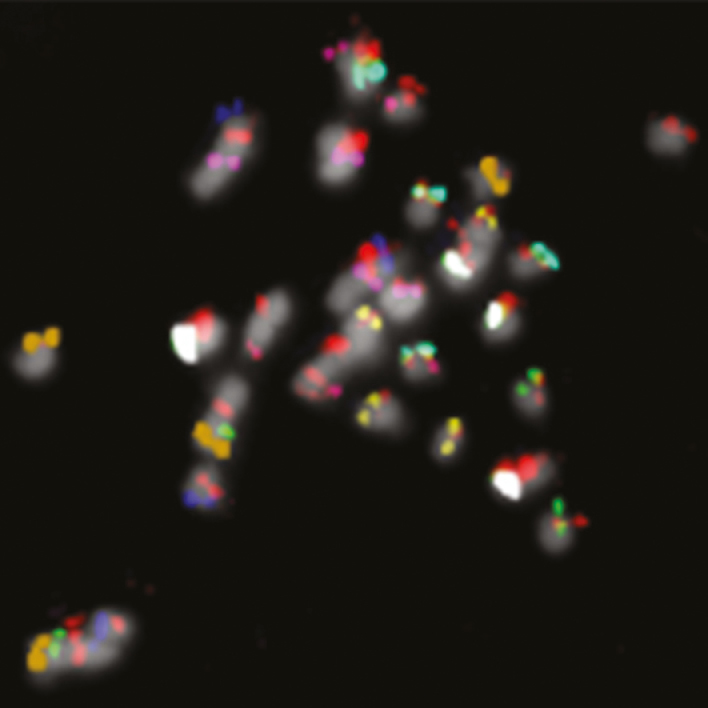
Annals of Botany 122: 445–459, 2018
doi: 10.1093/aob/mcy086
The Brachypodium (Poacea) genus is a useful model system for studying grass genome organisation. Its key representative B. distachyon is well characterised at the cytogenetic and genomic level, unlike other Brachypodium species such as B. stacei and B. hybridum. Using comparative chromosome mapping with B. distachyon-originated BAC-based probes, Lusinska et al. identify individual chromosomes of B. stacei and B. hybridum. They also demonstrate various and complex rearrangements including nested chromosome fusions and Robertsonian rearrangements, which shaped the B. stacei and B. hybridum karyotypes in terms of their chromosome number and structure.
Authors: Joanna Lusinska, Joanna Majka, Alexander Betekhtin, Karolina Susek, Elzbieta Wolny, and Robert Hasterok
Hydraulic efficiency in two Patagonian trees keeps constant across a precipitation gradient
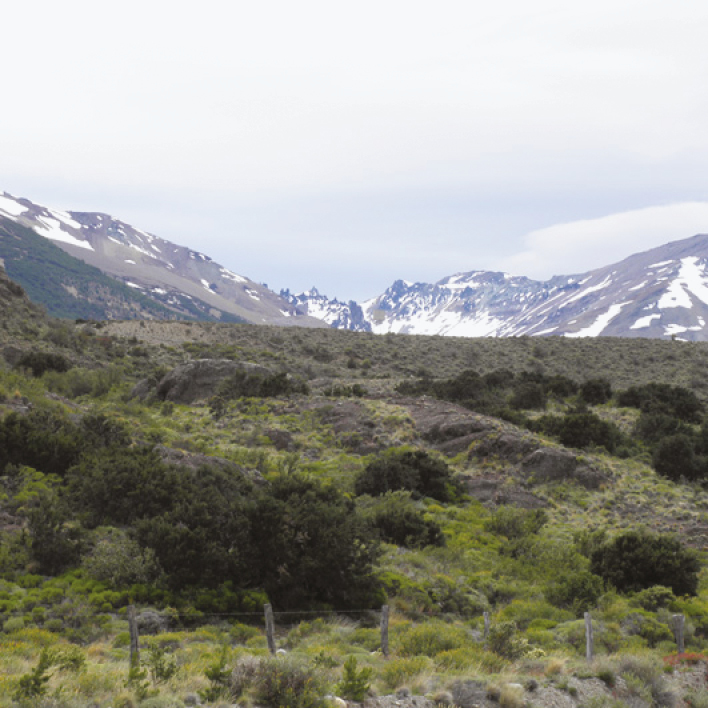
Annals of Botany 122: 461–472, 2018
doi: 10.1093/aob/mcy088
Generalist tree species growing across broad climatic gradients pose an intriguing question about how they can deal with such strong variations in climate. Studying the conductive system of trees may give a clue about their strategies to face rainfall variations. In southern Chile, García-Cervigón et al. examine hydraulic adjustments at the branch anatomical level in Nothofagus antarctica (Nothofagaceae) and Embothrium coccineum (Proteaceae) across a precipitation gradient from 500 to 2500 mm. Both species maintained hydraulic efficiency but combined with different levels of safety against embolism, which suggests the existence of alternative internal adjustments in coexisting species of temperate forests to face unpredictable climate changes.
Authors: Ana I. García-Cervigón, Jose Miguel Miguel Olano, Georg von Arx, and Alex Fajardo
Genotypic differentiation in a heterogeneous dune landscape in Arabidopsis lyrata
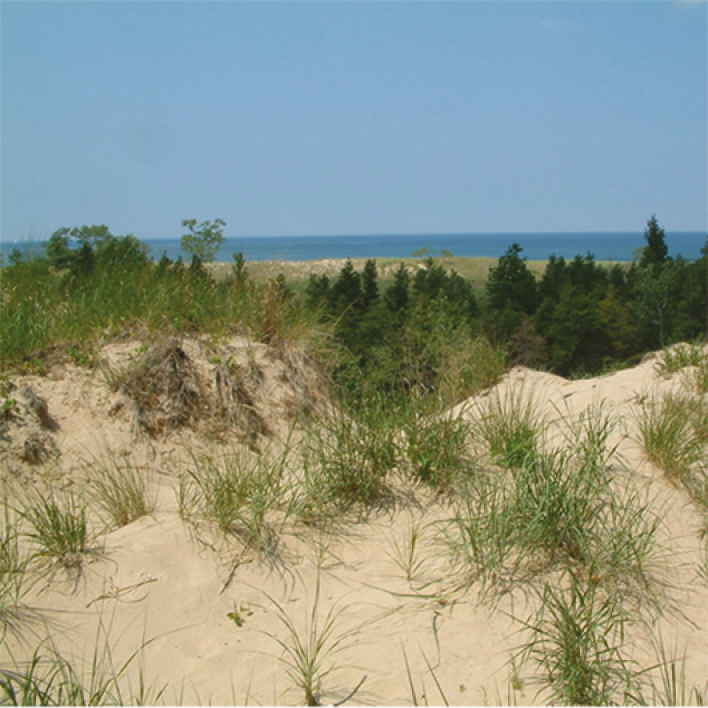
Annals of Botany 122: 473–483, 2018
doi: 10.1093/aob/mcy090
The role of fine-scale habitat heterogeneity on within-population genetic divergence is studied in North American Arabidopsis lyrata (Brassicaceae) inhabiting a sand dune landscape. Wos and Willi relate site-of-origin variables of maternal seed families with genotypic trait differentiation and gene expression differences to find traits and genes involved in microhabitat adaptation. Multivariate analysis reveals significant environment–trait associations, between distance from trees, relative dune position and the potential of interspecific competition, and plant size and reproductive phenology. Expression analysis on those associations point to the importance of genes involved in stress responses and senescence in microhabitat adaptation.
Authors: Guillaume Wos and Yvonne Willi
Phene interactions determine nutrient capture in common bean
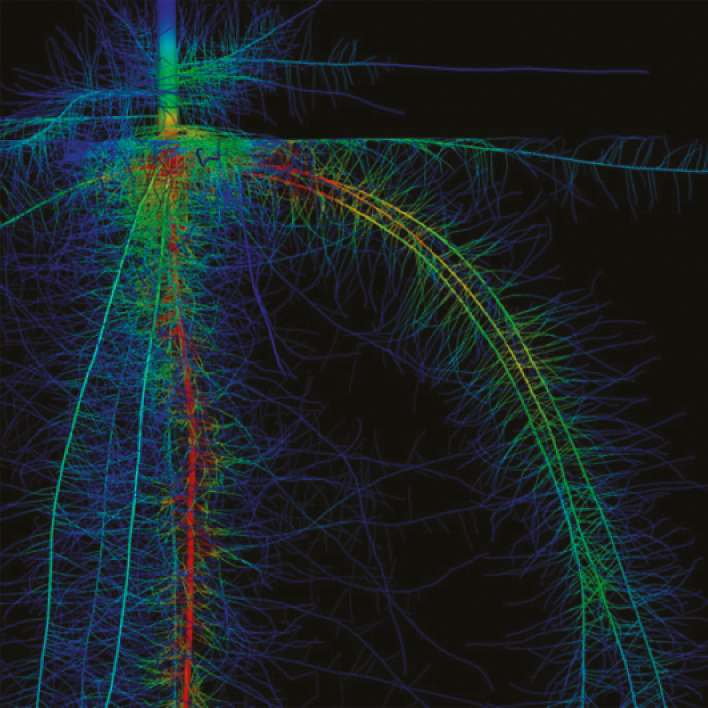
Annals of Botany 122: 485–499, 2018
doi: 10.1093/aob/mcy092
Rangarajan et al. employ the functional–structural model SimRoot to explore how interactions among architectural phenes in common bean, Phaseolus vulgaris (Fabaceae) determine the acquisition of phosphate and nitrate, two key soil resources contrasting in mobility. The utility of a root architectural phenotype is determined by whether the constituent phenes are synergistic or antagonistic. Competition for internal resources and trade-offs for external resources result in multiple phenotypes being optimal under a given nutrient regime. No single phenotype is optimal across contrasting environments. These results have implications for understanding plant evolution and also for the breeding of more stress-tolerant crop phenotypes.
Authors: Harini Rangarajan, Johannes A. Postma, and Jonathan P. Lynch
The role of the TPS22 gene in selenium tolerance
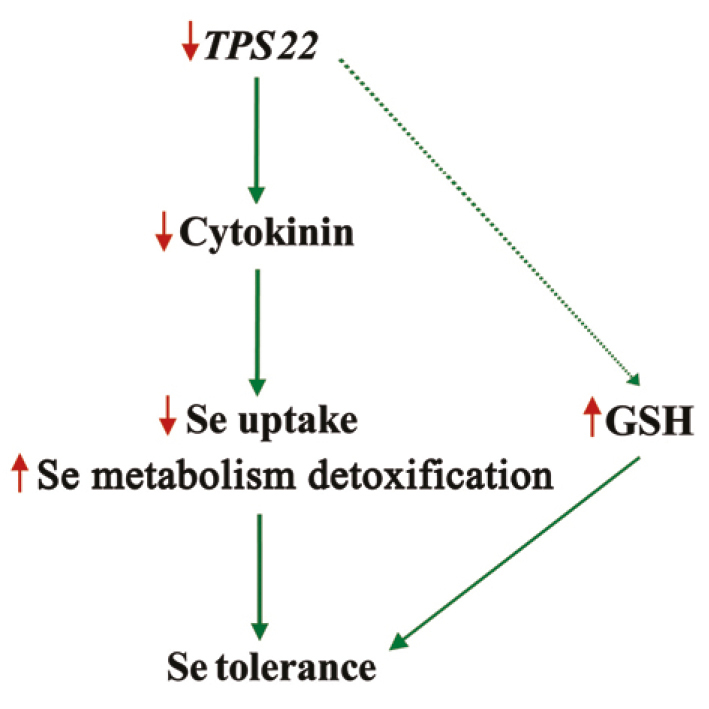
Annals of Botany 122: 501–512, 2018
doi: 10.1093/aob/mcy093
Excess selenium (Se) is toxic to plants; however, relatively little information is known about the regulatory mechanism of plant Se tolerance. Jiang et al. report a novel role of the TPS22 (terpenoid synthase) gene in Se tolerance in Arabidopsis using mutant screening, gene cloning and expression studies. Their findings reveal that cytokinin is downregulated and involved in TPS22-mediated Se tolerance by affecting the key gene expression of Se uptake and Se metabolism detoxification. This study sheds light on the mechanism of Se detoxification and tolerance in plants.
Authors: Li Jiang, Haimei Cao, Ziping Chen, Changxuan Liu, Shuqing Cao, Zhaojun Wei, Yi Han, Qiuchen Gao, and Weiyan Wang


